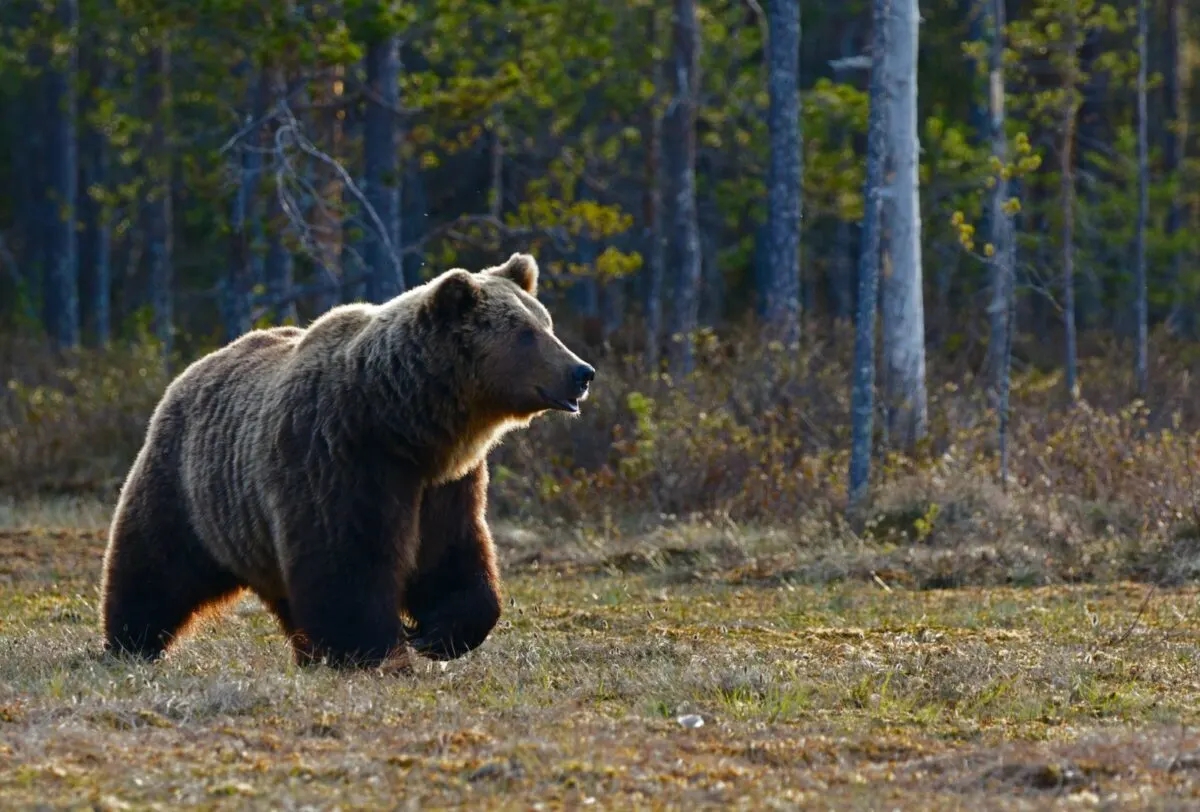We all are familiar with bears, but did you ever wonder if they are related to other animals, like dogs, for example? Though it might seem far-fetched, the truth is that bears and dogs evolved from similar ancestors. Sounds intriguing, doesn’t it?
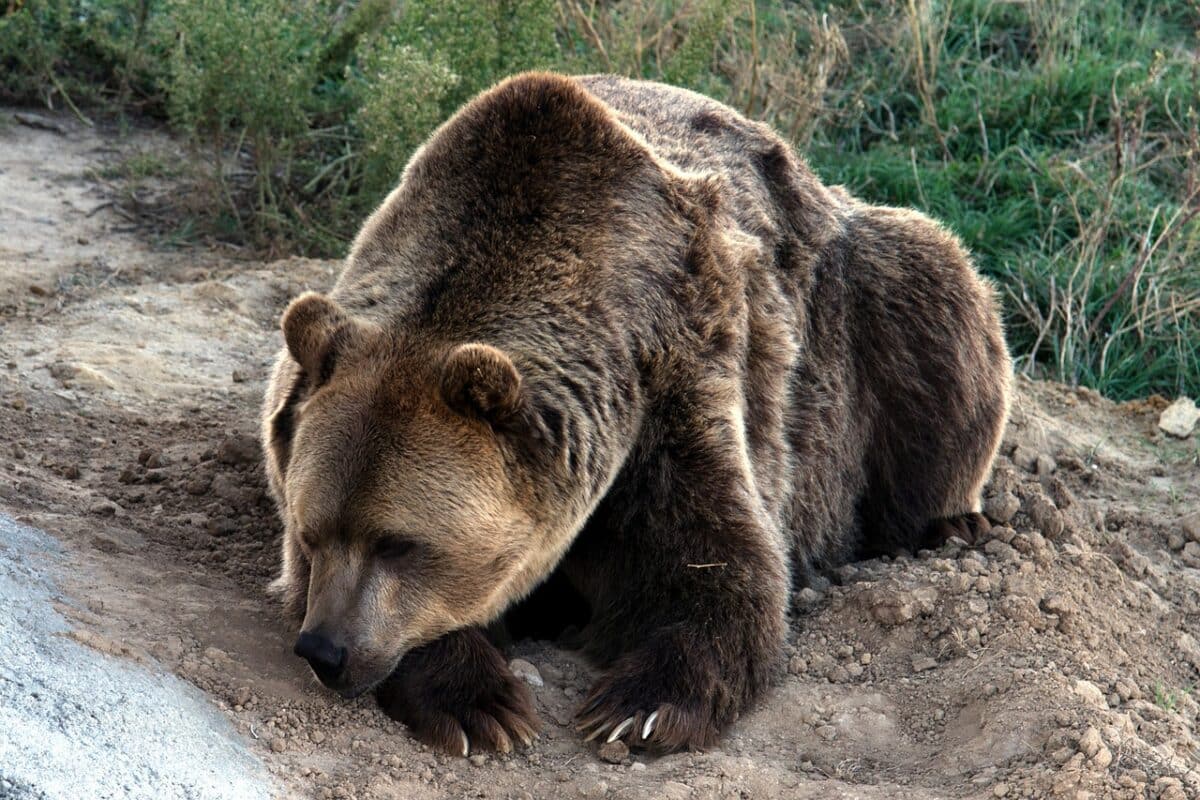
Let’s explore the connection between these two distant relatives and examine how their relationship has evolved over time. Through a detailed look at their evolutionary biology, you’ll better understand how deep genetic ties connect breeds, ranging from the tiny chow chow to the American black bear.
Let’s find out if bears are related to dogs!
Evolution of the Bear
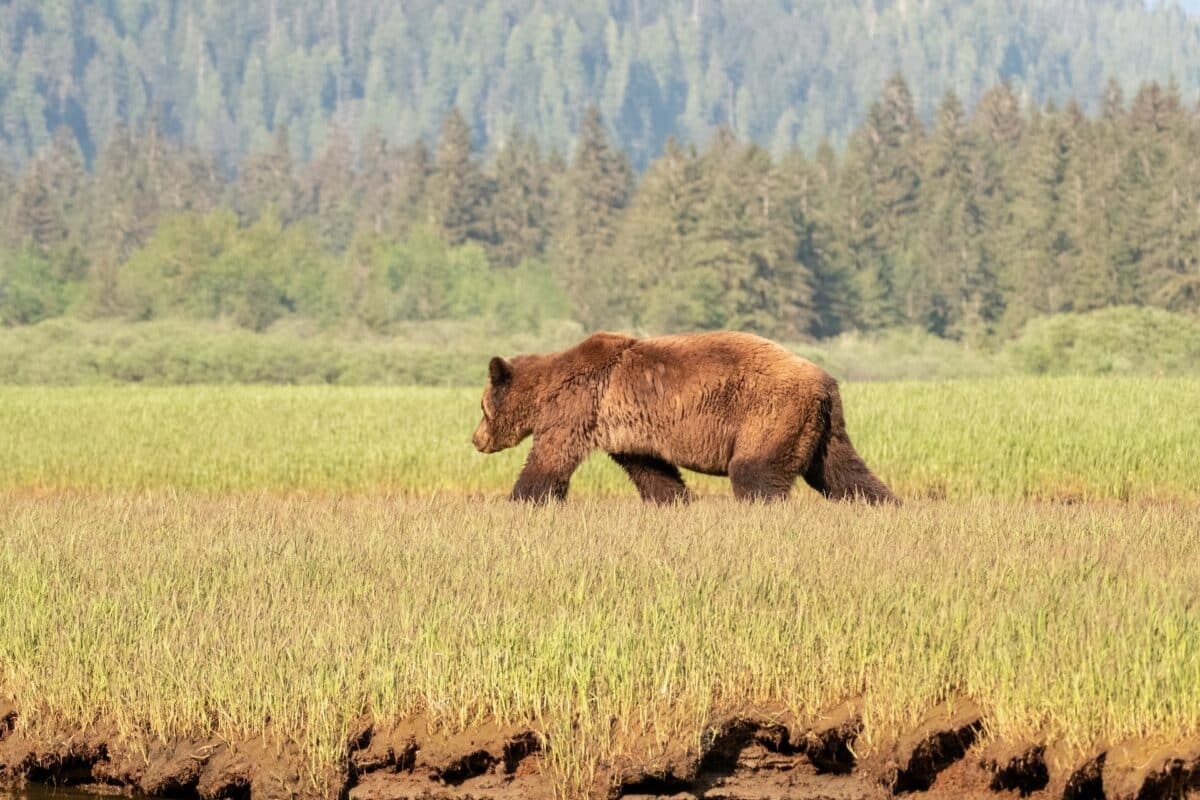
Bears have been inhabiting Earth for millions of years, evolving from a single common ancestor to the eight species that exist today: the polar bear, brown bear, American black bear, Asiatic black bear, sloth bear, sun bear, spectacled bear, and giant panda.
While the wildlife habitats of bears are changing due to human influence, their impressive adaptability ensures their continued survival.
They are apex predators, sitting safely at the top of the food chain in the various ecosystems where they live (except for the docile panda.) Bears are both powerful and graceful in their ability to hunt and to conserve energy while relying on plant sources for much of their diet. This omnivorous lifestyle has enabled them to endure many seasonal changes.
Evolution of the Dog
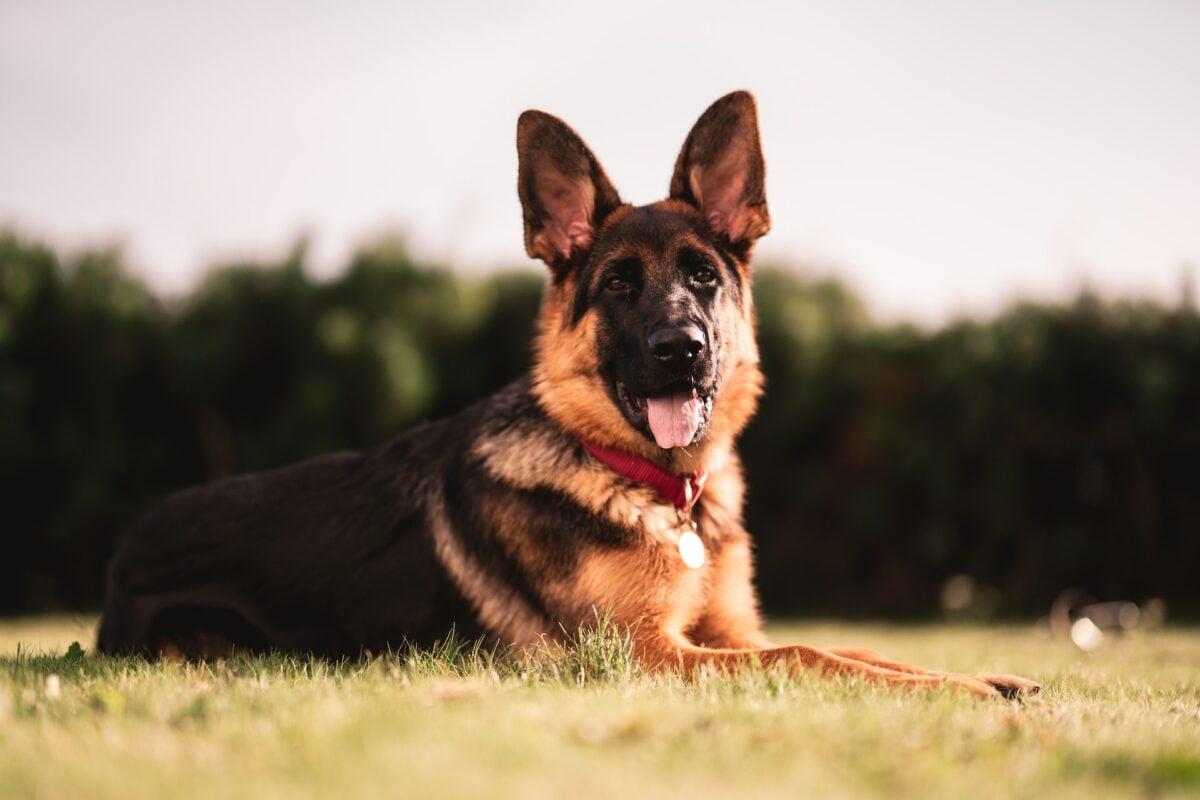
Dogs have a fascinating history that dates back thousands of years. They descended from wolves and were domesticated over time into the beloved companions they are today. Ancient evidence has found that dogs were present with ancient humans in Europe about 14,000 to 6,400 years ago and were likely used as hunting companions and helpers.
By the middle ages, various breeds of dogs had already emerged and were used to perform various functions like guarding property, herding animals, and protecting hunters.
Today, according to a survey, over 68% of US households own a pet, reflecting how important these four-legged friends have become to us.
Bears and Dogs Are Both Mammals
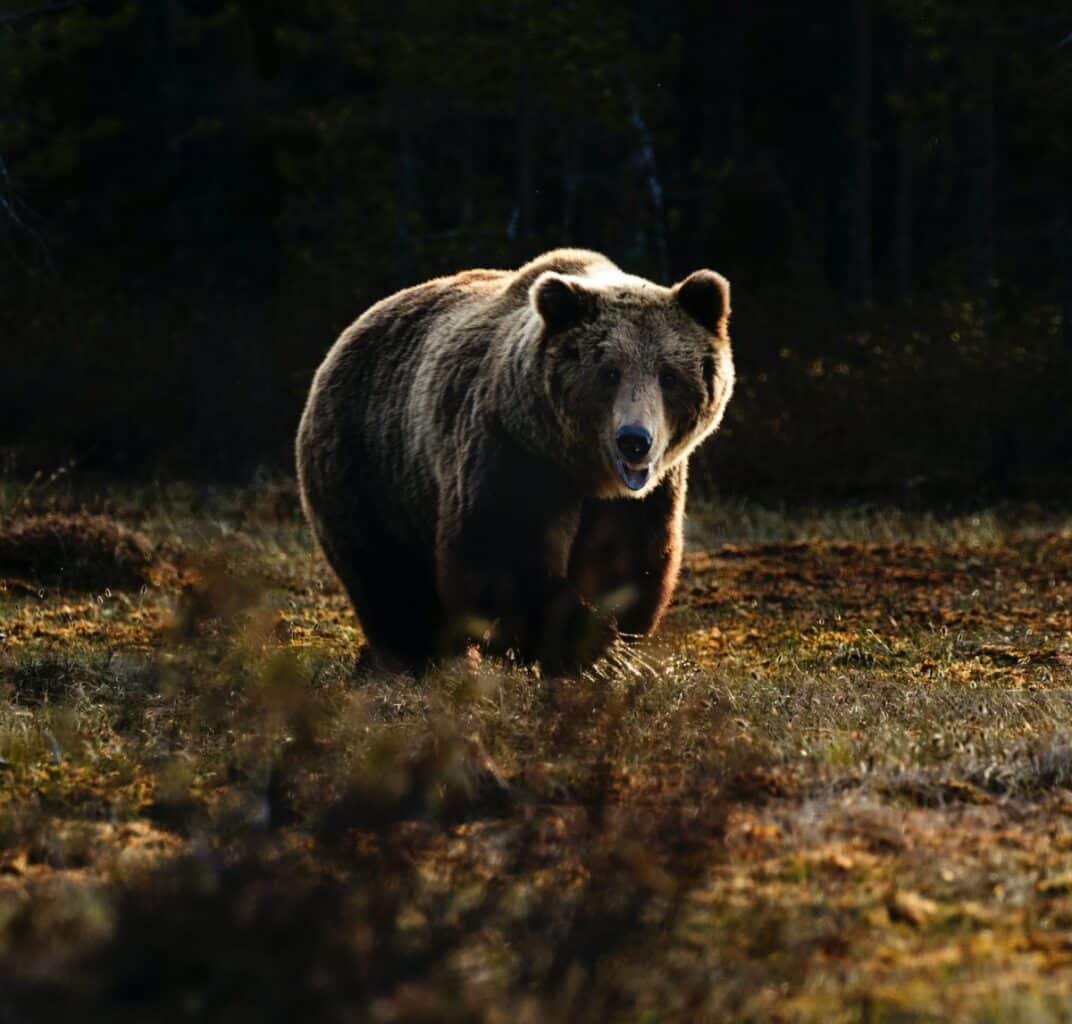
Bears and dogs are both members of the taxonomic class Mammalia, making them both mammals. By virtue of this we can see that bears and dogs are at the very least a little bit related. With that being said, these two animals have many differences; the bear stands at an average of 7 feet tall, while a dog’s size ranges from usually smaller than a foot to just over 2 feet at their largest.
Bears also have far greater strength than dogs and should not be domesticated due to their wild nature, unlike dogs, which can function as companions in society. Physically, bears sport thick fur coats with powerful claws for proper scooping and maneuvering through trees and terrain. Dogs generally have thin fur coats with smaller claws meant primarily for scratching or grooming themselves.
Ultimately, both of these mammals provide unique offerings to our ecosystem- so while they may look different on the outside, deep down, they share a common trait: their classification as part of Mammalia.
Learn more about mammals here.

As incredible as it may seem, bears and bogs share a common ancestor. The fossil record that is currently available has provided sufficient evidence needed for scientists to understand how bears and dogs evolved from a single, shared ancestor.
The two species split from each other millions of years ago, and naturally, this separation created distinct differences between them. Although this occurred so long ago, bears and dogs are nonteheless related – at least to a certain extent.
However, both species possess similar skeletal features, and a closer biological analysis has shown that bears are more closely related to dogs than cats, or any other carnivore for that matter. This unexpected revelation is another interesting example of how biology constantly surprises us with its complexity and beauty.
Bears and dogs may seem worlds apart, but they are actually cousins (albeit extremely distant.) Their common ancestor is the amphicyonidae – an ancient species of large mammals that lived roughly 45 million years ago. Fascinatingly, this creature had traits of both canines and ursids!
This discovery occurred in 2004, when researchers conducted a molecular phylogenetic investigation within the Carnivora (Mammalia) group, creating a well-supported hypothesis that bears and dogs share this ancestor due to their similar mitochondrial sequences.
Also, both families diverged from the amphicyonid around 30-35 million years ago. As we can observe today, each species has evolved independently to meet varying needs to survive in their respective habitats. Despite the differences between bears and dogs, they have a long history going back millions of years!
Bear Breeds That Resemble the Dog
Here are the details of a few bear breeds that look like dogs (with a little imagination):
● American Black Bear
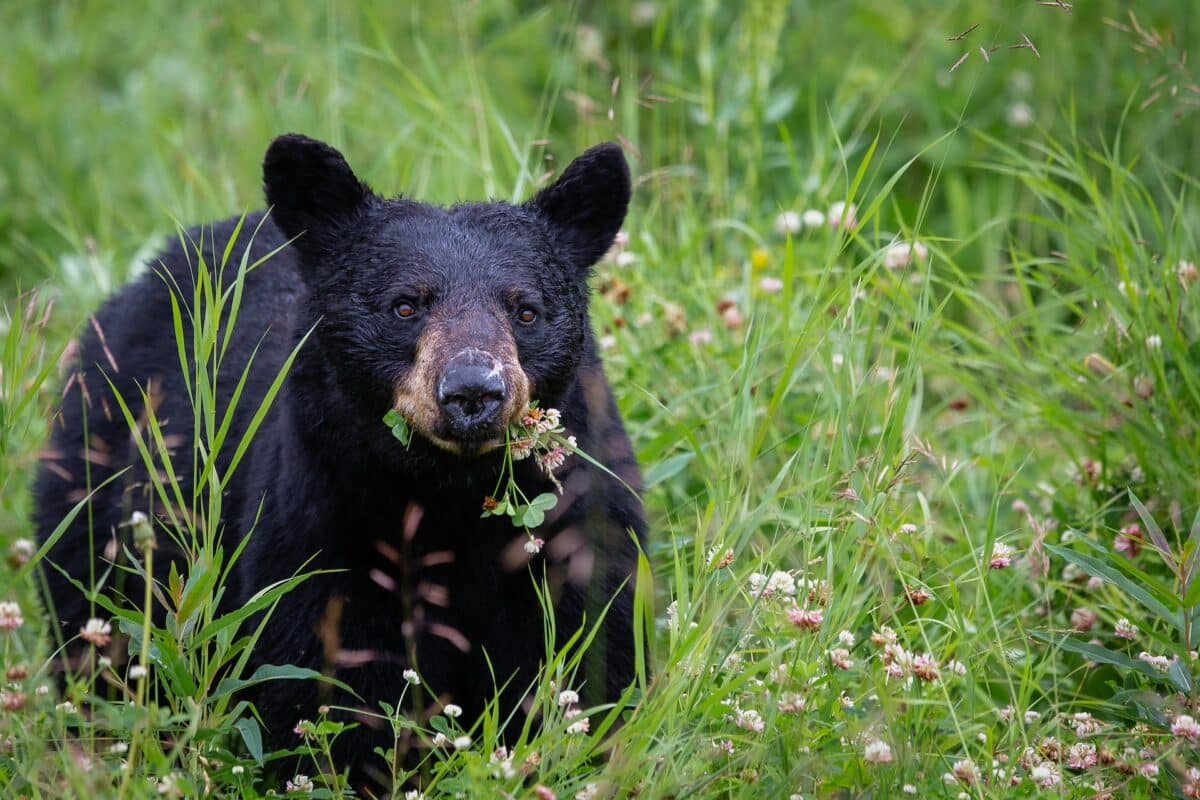
Meet the smallest bear species in North America, the black bear. These adaptable creatures make their homes in wooded regions across the United States and Canada. Now, don’t let the name fool you – these bears aren’t necessarily black; their fur can span from a light brown to a rich dark brown. When it comes to the scale, they usually tip it at a weight between 150 and 600 pounds.
● Brown Bear
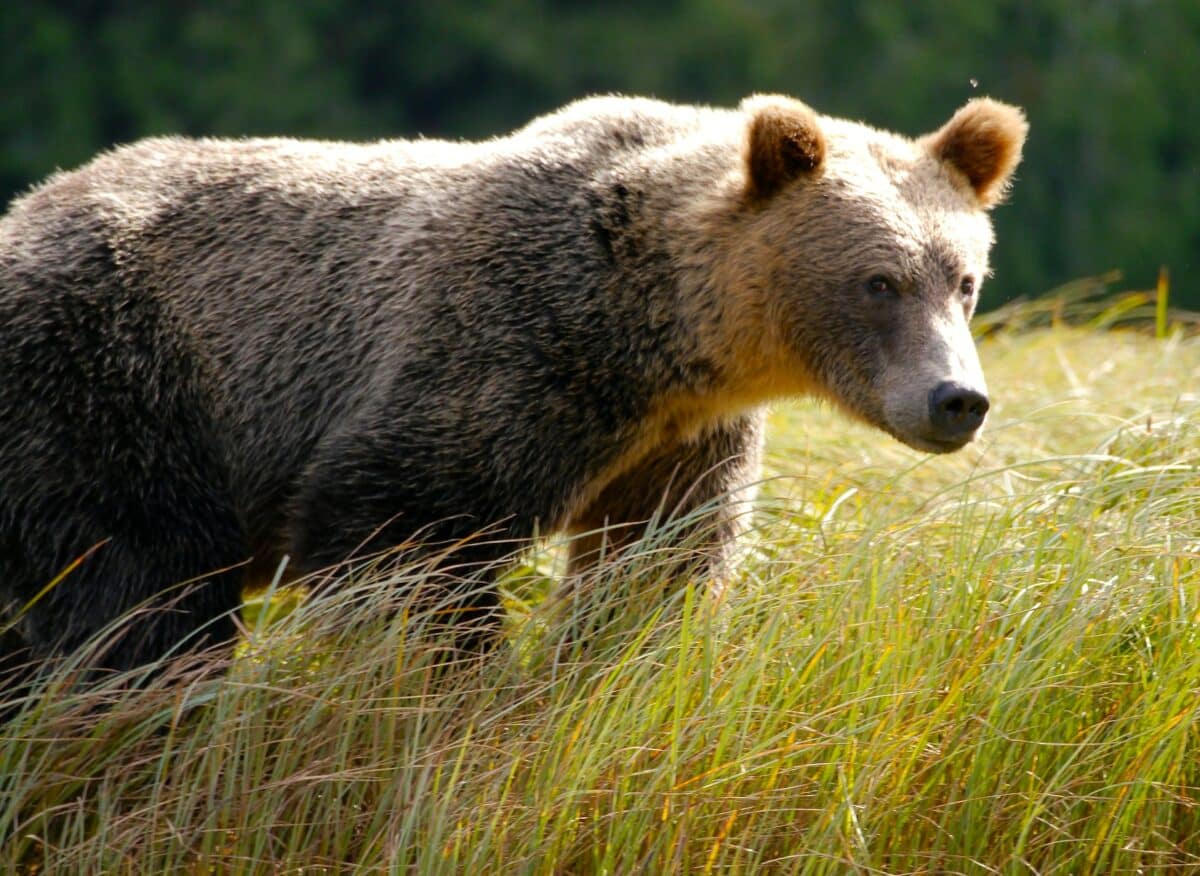
The brown bear is the largest of the three bear species in North America and is found in forests throughout the United States and Canada. Brown bears can range in color from light brown to dark brown but are most commonly dark brown. They typically weigh between 500 and 1,500 pounds – in other words they are substantially bigger than the black bear.
● Polar Bear
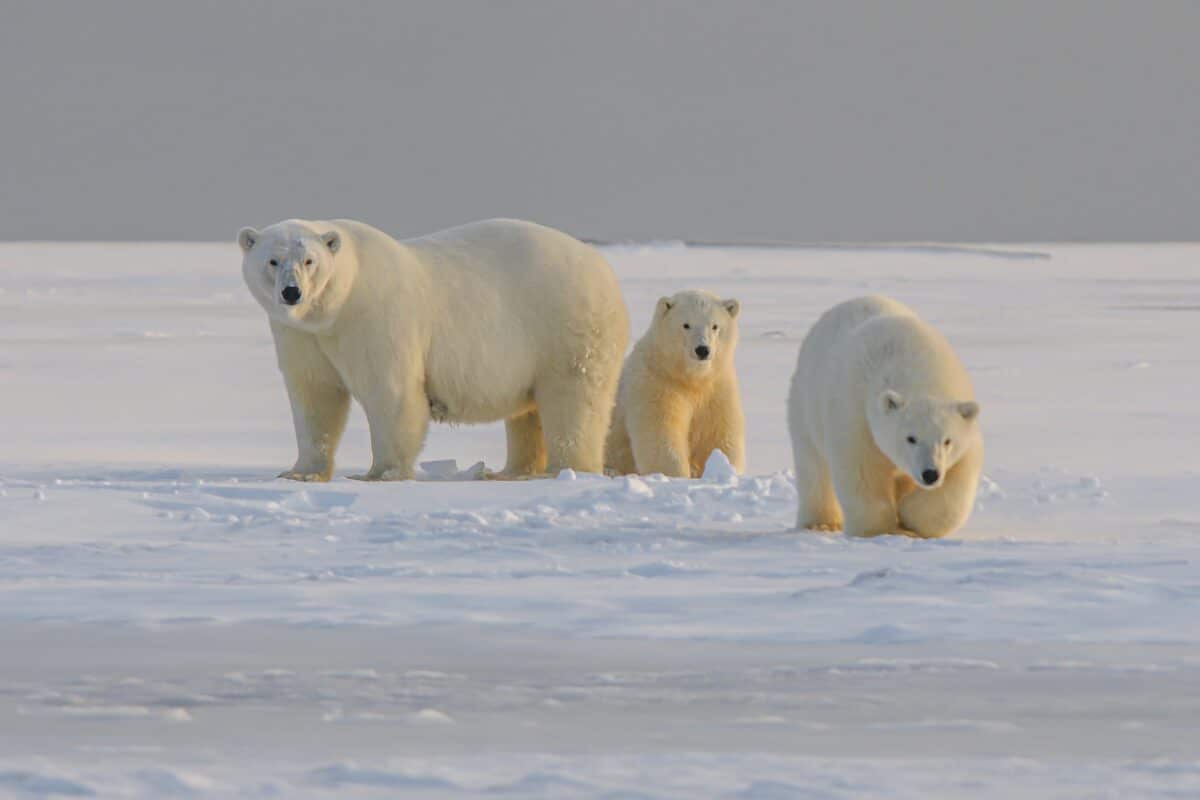
This creature that is the polar bear is the largest of the three bear species in North America and is found in arctic regions worldwide. Polar bears are white or cream-colored and typically weigh between 1,000 and 2,000 pounds.
● Sloth Bear
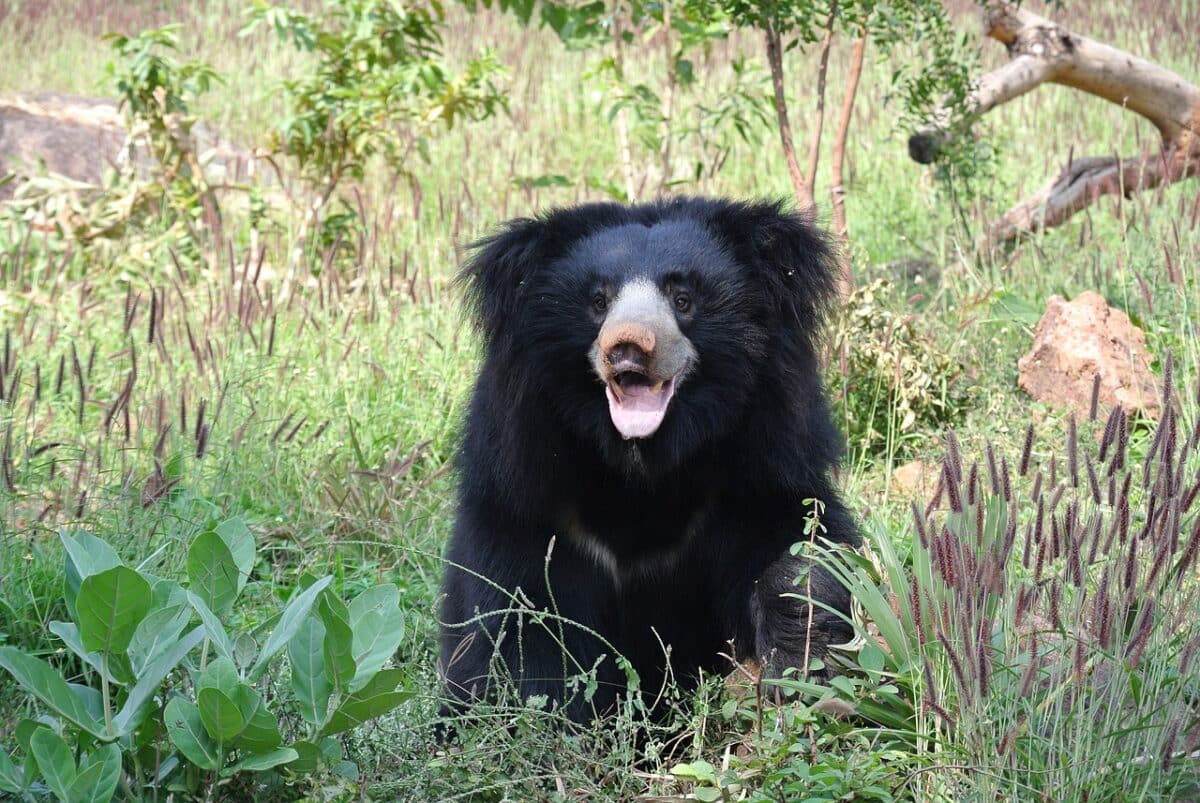
The sloth bear is a small bear found in various wooded habitats in India and Sri Lanka. Sloth bears are black with a light-colored muzzle and typically weigh between 100 and 200 pounds.
Dog Breeds That Look Like Bears
Here are a few dog breeds that look like bears:
● Akita
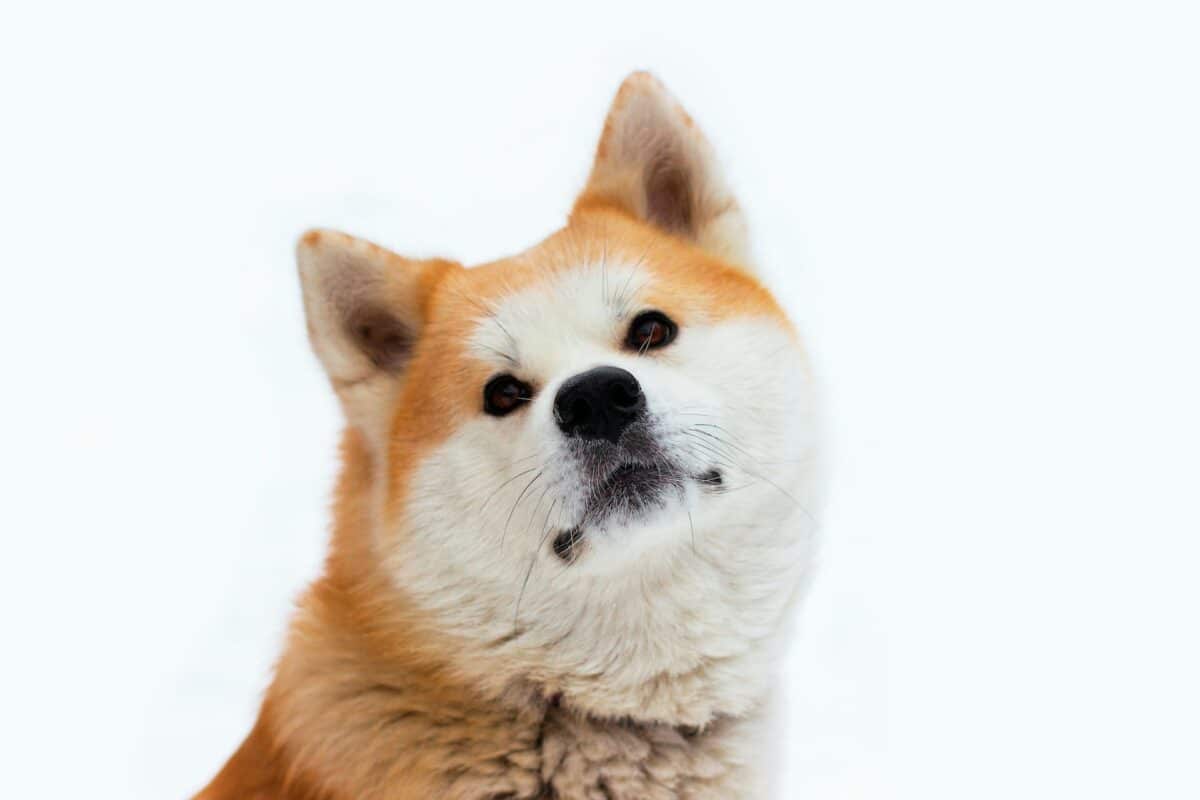
It is a large breed of dog that originates from Japan. The Akita is a very loyal and protective breed known for its bear-like appearance. It is a very popular breed in Japan and has also gained popularity in other parts of the world in recent years.
● Alaskan Malamute
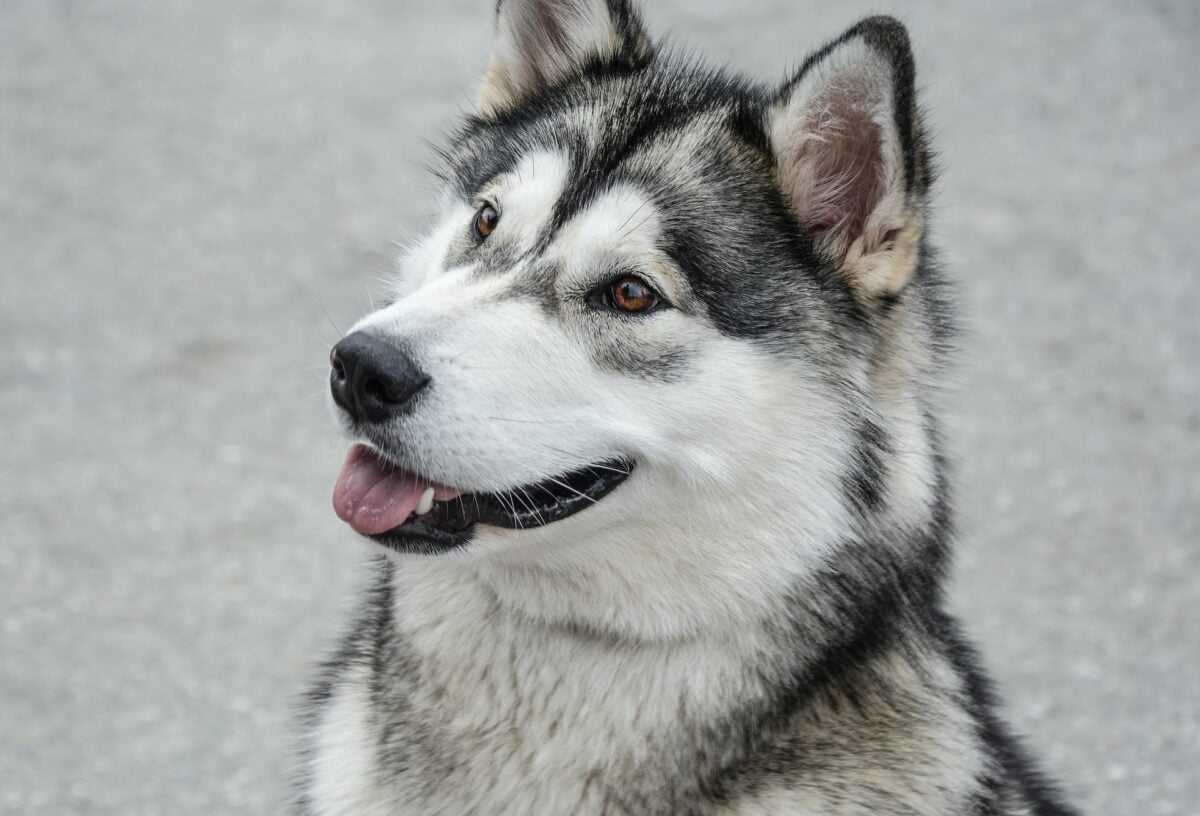
The Alaskan Malamute is a large breed of dog originally bred for sledding in the Arctic region and is known for its thick fur coat, which helps to protect it from cold weather. This breed of dog is also known for its bear-like appearance and is a popular breed among dog enthusiasts.
● Canadian Eskimo Dog
The Canadian Eskimo Dog is a large breed that the Inuit people of Canada originally bred. They have a very thick coat of fur. Males have especially thick fur around their necks, which almost resembles a mane and allows them to appear much bigger than they actually are. Sadly this breed is risking extinction, which is thought to be related to the increased use of snowmobiles over the last few decades.
● Chow Chow
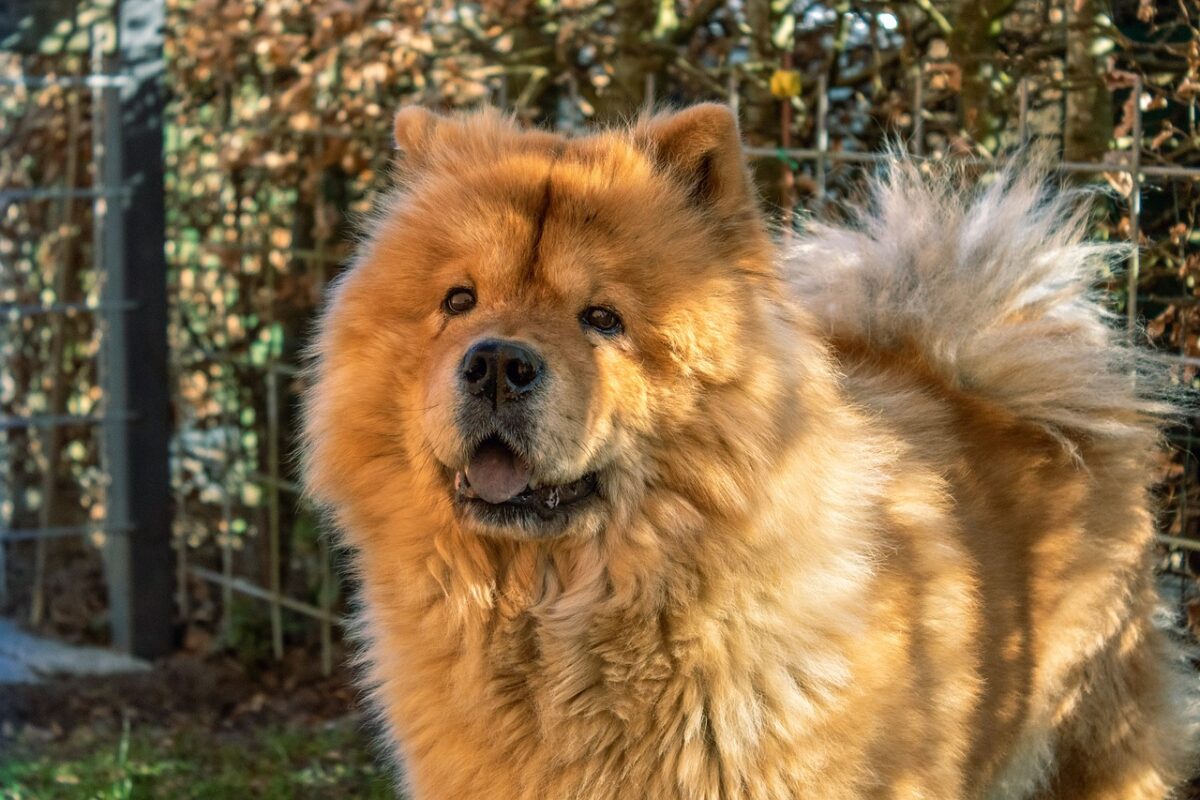
The Chow Chow is a large breed of dog that originates from China. The Chow Chow is known for its blue-black tongue, which is unique among dog breeds. They have a dense double coat that can either be rough or smooth to the touch. These dogs are famous for being particularly protective over their owners and property.
● Eurasier
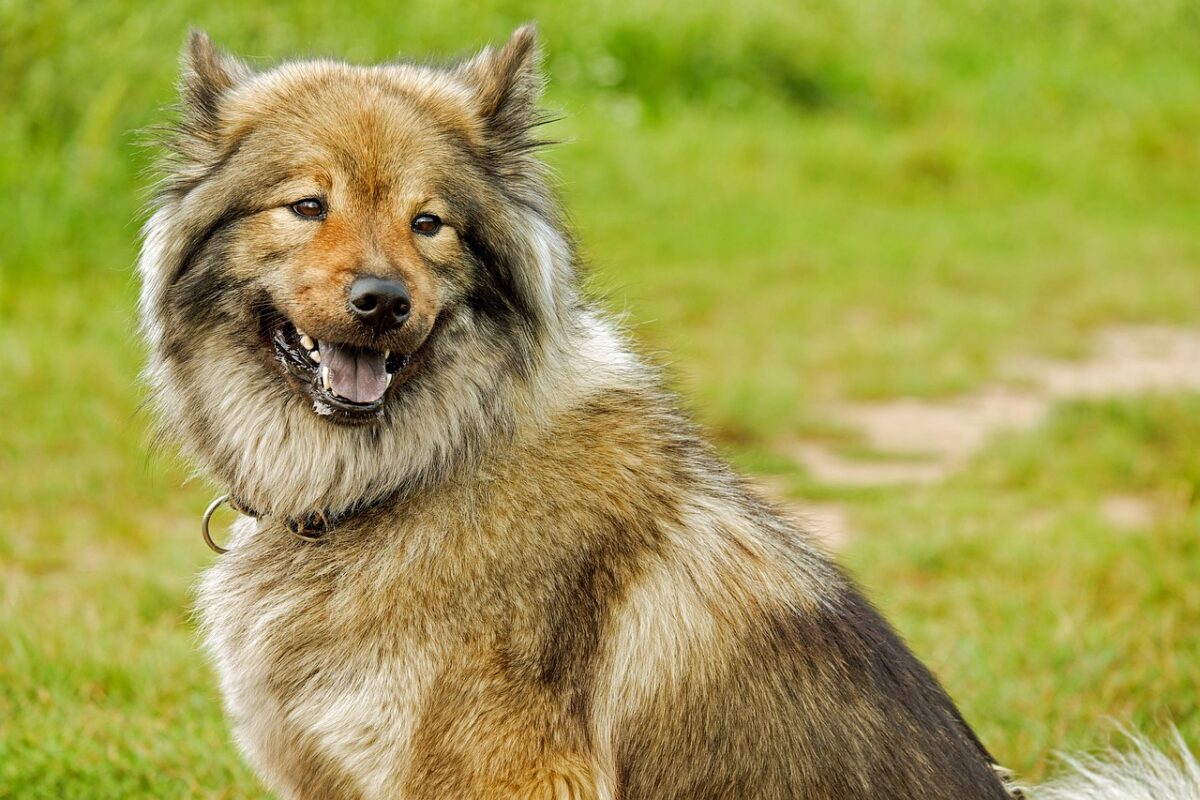
The Eurasier is a medium-sized breed of dog that originates from Germany. The Eurasier is known for its wolf-like appearance, resulting from crossbreeding the Chow Chow with the Wolfspitz.
● Samoyed
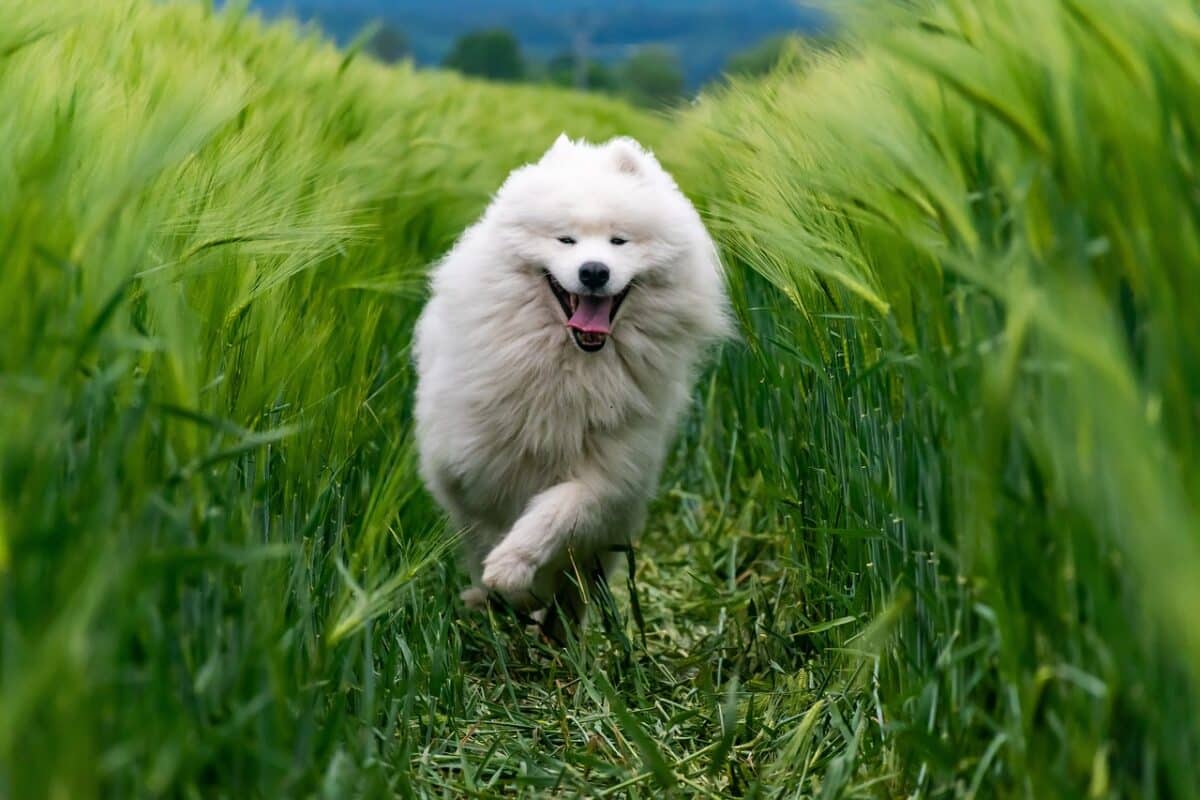
This large breed of dog originates from Siberia. The Samoyed is typically used for herding, protection, hunting, and sled-pulling. They are extremely friendly and affectionate and therefore don’t make great guard dogs despite their impressive size and bear-like look.
Domestication
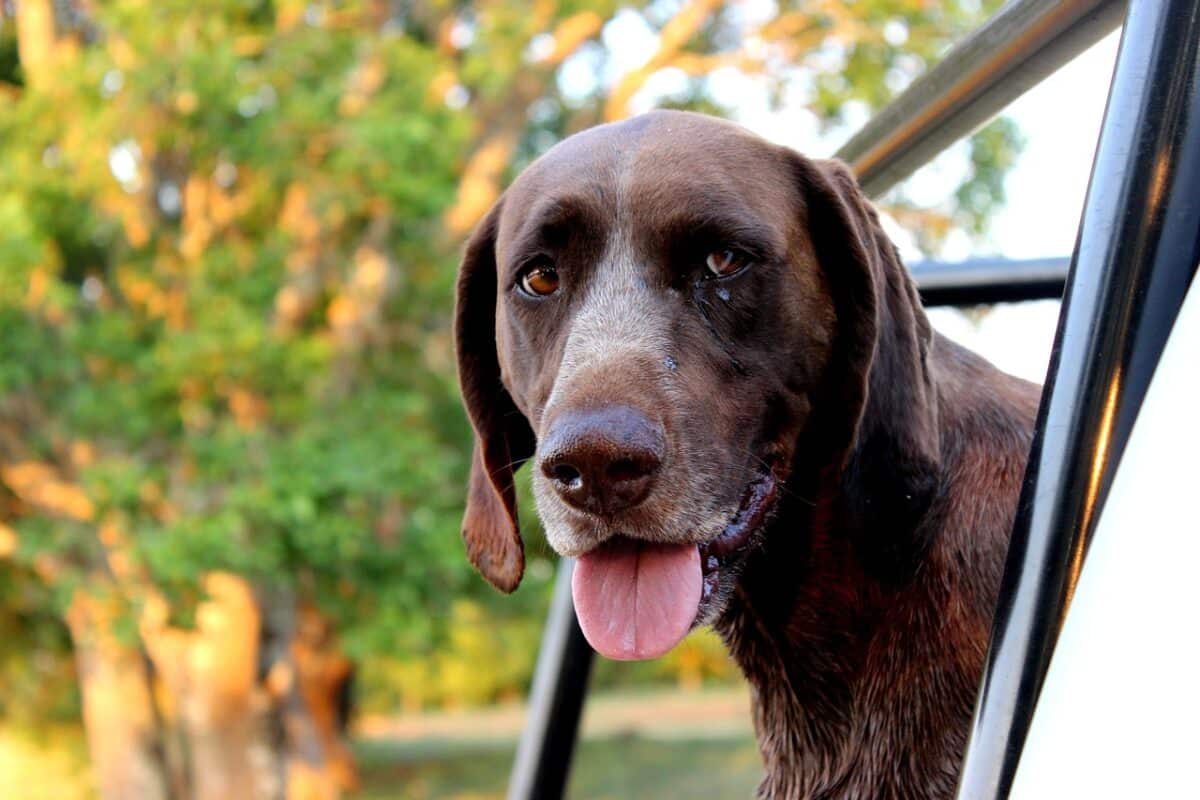
Canines made excellent working animals, it’s no wonder that ancient cultures chose them as their closest animal companion. People could create highly trained pets through selective breeding to help hunt, guard property, and provide security.
As time passed, more breeds of dogs began to appear worldwide, further testifying to their success as domesticated animals.
Bears, on the other hand, cannot be successfully domesticated. They can be trained and grow used to humans, although this is almost impossible to do under ethical and humane circumstances. Other than their predatory nature and huge size, the insane amounts of food they need on a daily basis make it unfeasible to domesticate them. Due to being primarily solitary animals, it is also challenging to make them breed in captivity. After all, they’re apex predators that have evolved to violently attack and dismember prey.
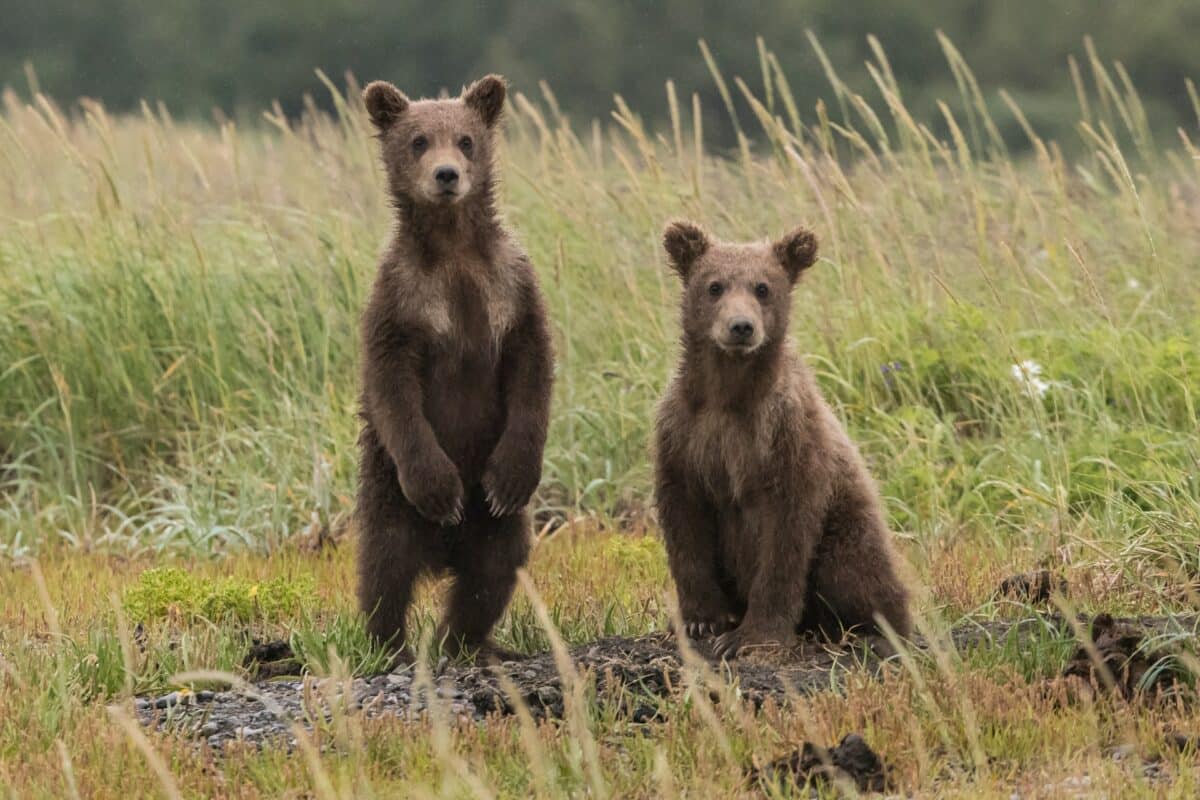
Bears and dogs are both iconic species of the animal kingdom, but the regions they inhabit can differ quite drastically. Most species of bears live in North America, Europe, Asia, and parts of South America — with black and brown bears often being most abundant in forested mountainous areas.
On the other hand, dogs are considered cosmopolitan species since they have adapted to virtually every region worldwide and can live in Arctic climates as well as in hot deserts. Depending on their breed and geographic location, there may be some overlap between the respective habitats of bears and dogs.
For example, certain breeds of huskies are very well-suited for colder regions like the Alaskan tundra. Although both species may share a common region at times, generally speaking, one should expect to find them in very different areas of the world.
Bears Have Been Known to Interact with Dogs
Bears can view dogs both as threats or playmates, depending on their nature. Interactions between bears and dogs can occur rarely, but when they do, it’s often because one animal does not fear the other.
These occurrences are typically observed in areas with minimal human intervention in the wildlife. In some cases, bears have shown evidence of befriending domesticated dogs who weren’t seen as a threat.
Bears that frequently interact with dogs seem to forget that they’re wild animals, though they may exhibit defensive behavior if provoked or spooked by their canine companions. Studies suggest that while a low level of trust is present between these animals in certain locations and circumstances, such behavior must come naturally and shouldn’t be forced upon them – or else it could lead to devastating and bloody results.
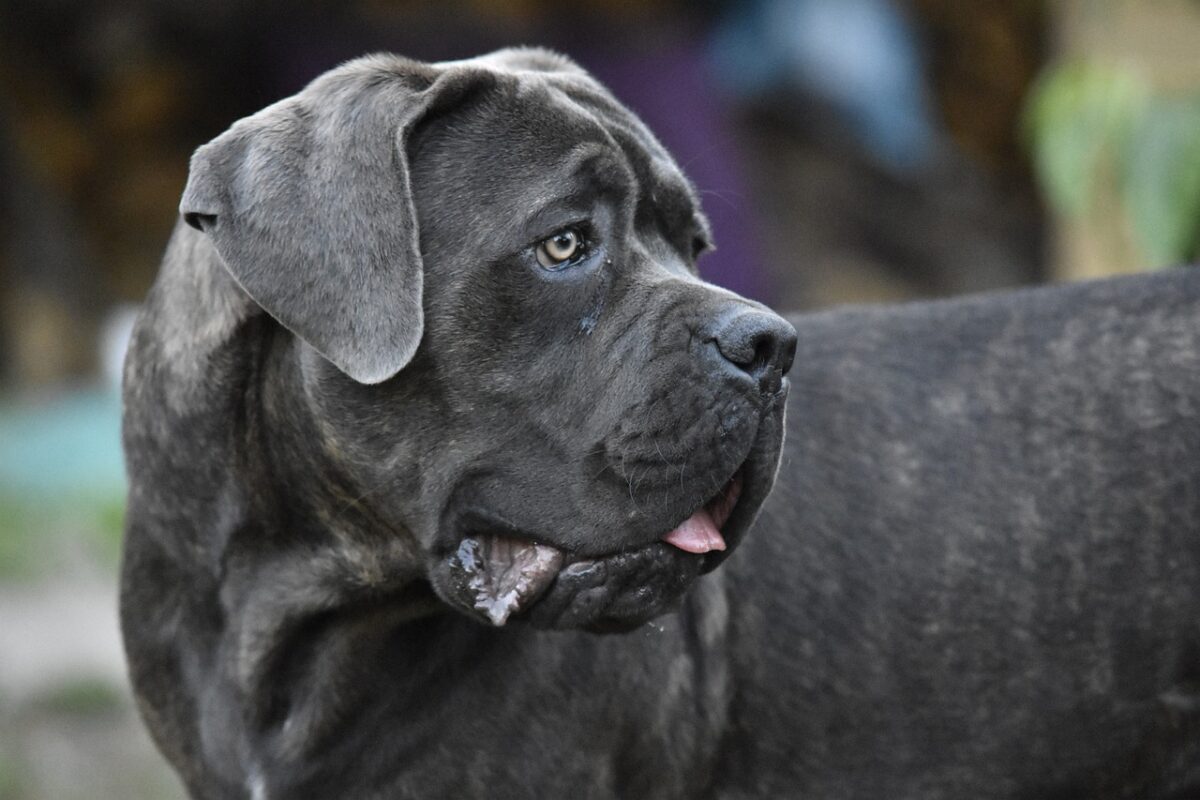
Dogs and bears may often look quite different, but they have some physical similarities that make them more closely related than meets the eye.
- Both species belong to the same animal order, Carnivora, which includes cats and other predatory animals.
- They have similar musculoskeletal structures, including four legs and five toes on each foot, with thin claws for gripping.
- Bears also possess a rudimentary collarbone to protect their spine from injury during movement, just like their canine counterparts.
- Both animals have forward-facing eyes with good depth perception to help them calculate distances when running or hunting.
- While certain species of bears are primarily plant-eaters or scavengers, they are all still predators at heart – and the same goes for domestic dogs and wolves.
Even though bears and dogs may not look alike at first glance, their shared physical characteristics make it clear that they both evolved from the same ancestor.
Behavior Similarities In Between Bears and Dogs
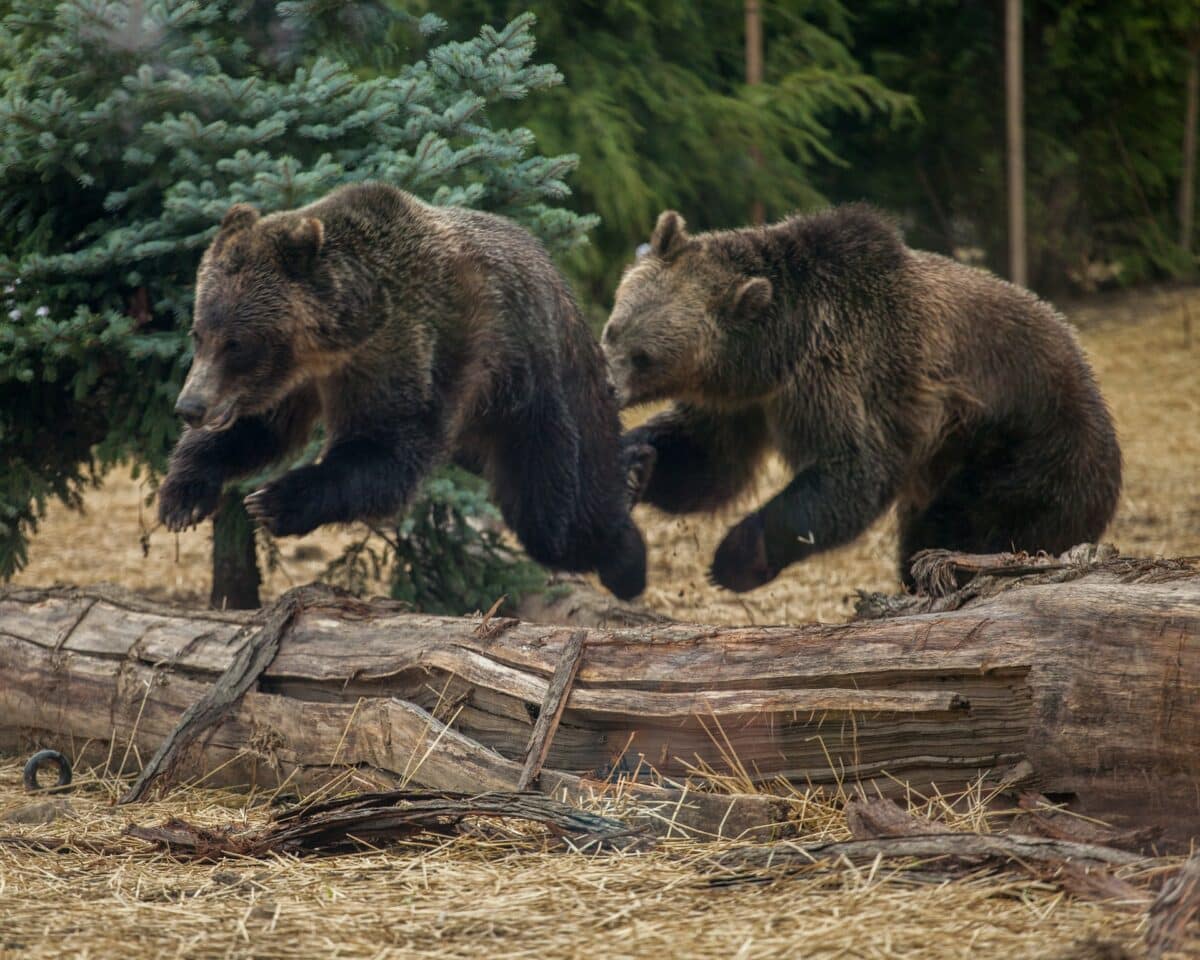
Bears and dogs have much in common in terms of their behavior. Both animals demonstrate formidable strength, protect and defend their families, hunt for food, and even display signs of affection toward their fellow pack members.
Generally speaking, though, bears are more solitary creatures, while dogs are highly social animals. Bears tend to be timider by nature compared to the adventurous spirit of a dog.
Interestingly enough, bears will often use vocalizations similar to those of dogs when communicating with one another. Growling and barking are commonly used as forms of communication in both species. This similarity is another indication that the two species must share some common evolutionary lineages despite their numerous differences.
Some Key Differences Between Bears and Dogs
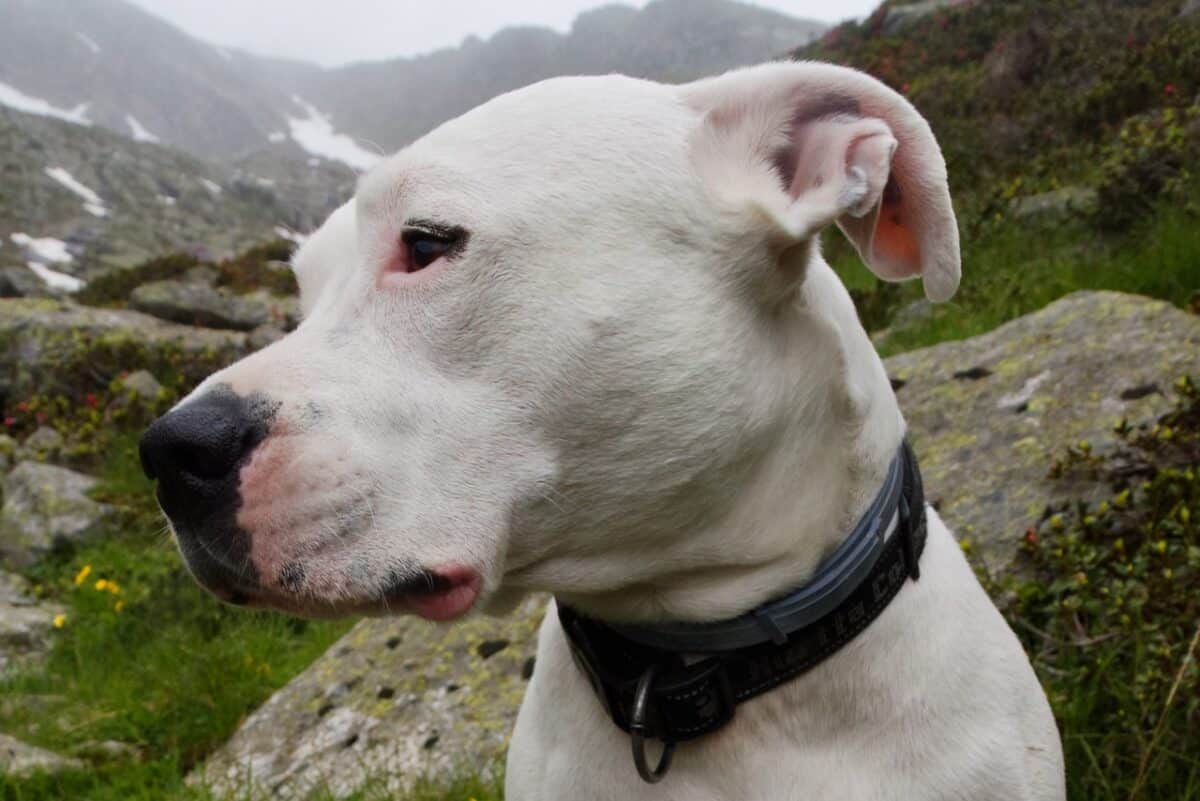
1. Bears are significantly larger than dogs. The average bear weighs around 600 pounds, while the average dog weighs around 60 pounds. It means that bears are around ten times the size of dogs.
2. Bears have fur, while dogs have hair. Fur is a type of thick, coarse hair that helps to keep animals warm in cold climates. On the other hand, dogs have thinner hair that does not provide as much insulation.
3. Bears are typically solitary animals, while dogs are social animals. Bears typically live alone, while dogs often live in packs or groups.
4. Bears hibernate in the winter, while dogs do not. Hibernation is a type of deep sleep that helps animals conserve energy during cold weather or scarce food availability.
5. Bears have much larger and sharper claws than dogs, used for killing prey. The claws in dogs are rarely used for much more than scratching themselves or digging holes.
Could Dogs and Bears Mate?
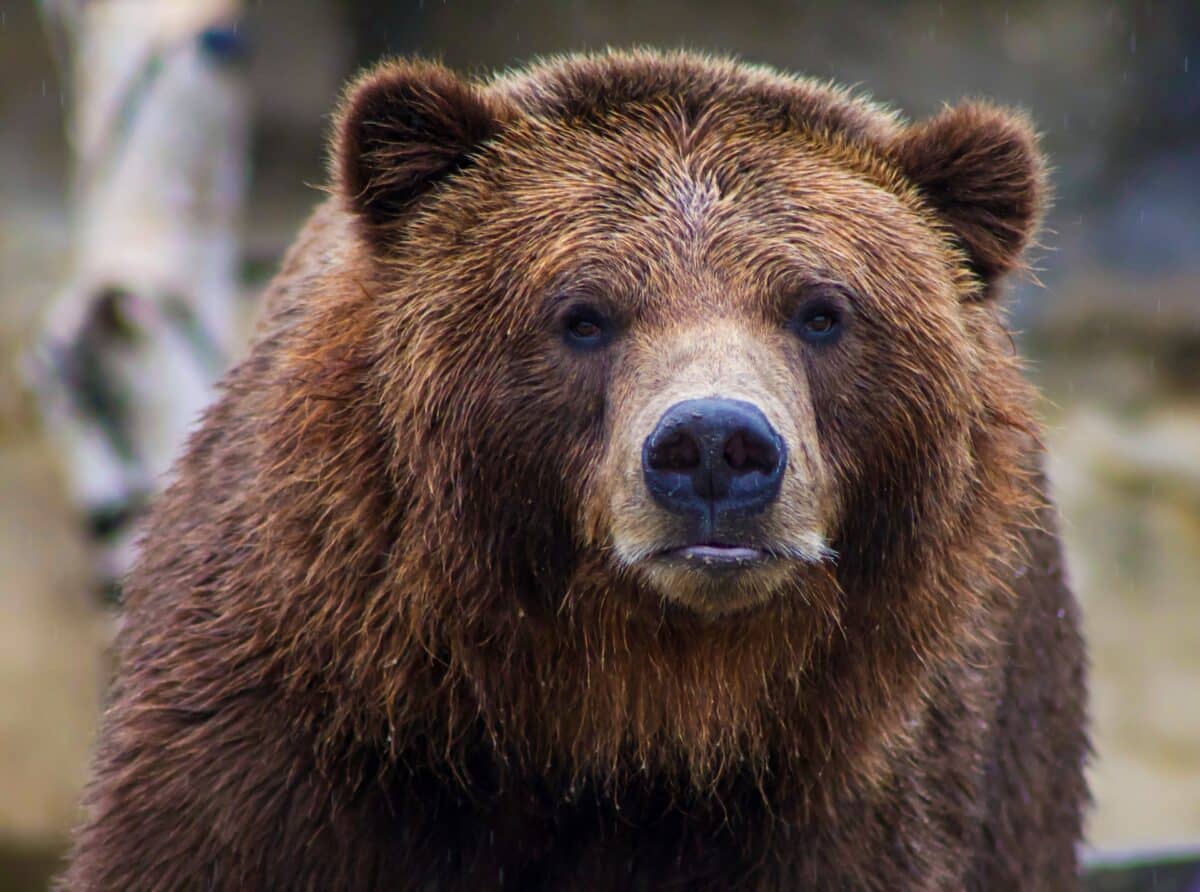
Could a dog and bear mate? As you probably guessed, the answer is no. While mammals in the same family, such as cats and tigers (which belong to separate species), can interbreed, members of different families generally cannot do this. That’s because animals belonging to different families each have unique sets of chromosomes incompatible with one another.
Though it’s been known to happen across species here and there in the past, it is extremely rare, and if it occurs, the offspring is infertile.
Resemblance of Bears and Dogs
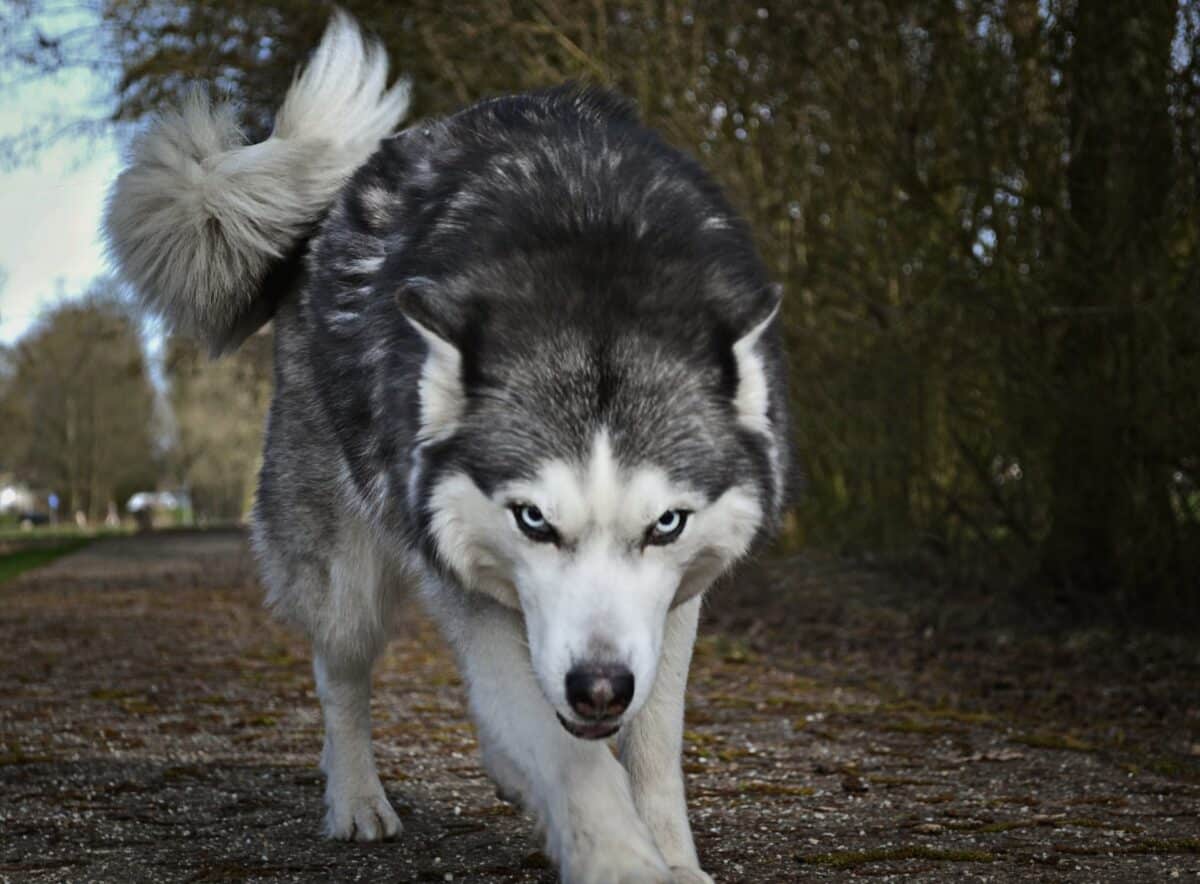
While it may seem like bears and dogs have a lot in common, their differences definitely weigh more than their similarities. Both animals are four-legged omnivores with sharp teeth and claws. However, upon further examination of the two species’ anatomy and behaviors, some major differences become apparent.
The dogs have ears that stick up from their heads, whereas bears lay flat against their skull. Dogs bark loudly and frequently, whereas bears make low grunts and growls, but usually only when they feel threatened. Additionally, bears mate only during the summer months, while mating for dogs occurs year-round.
Are Dogs and Bears Related: The Final Say
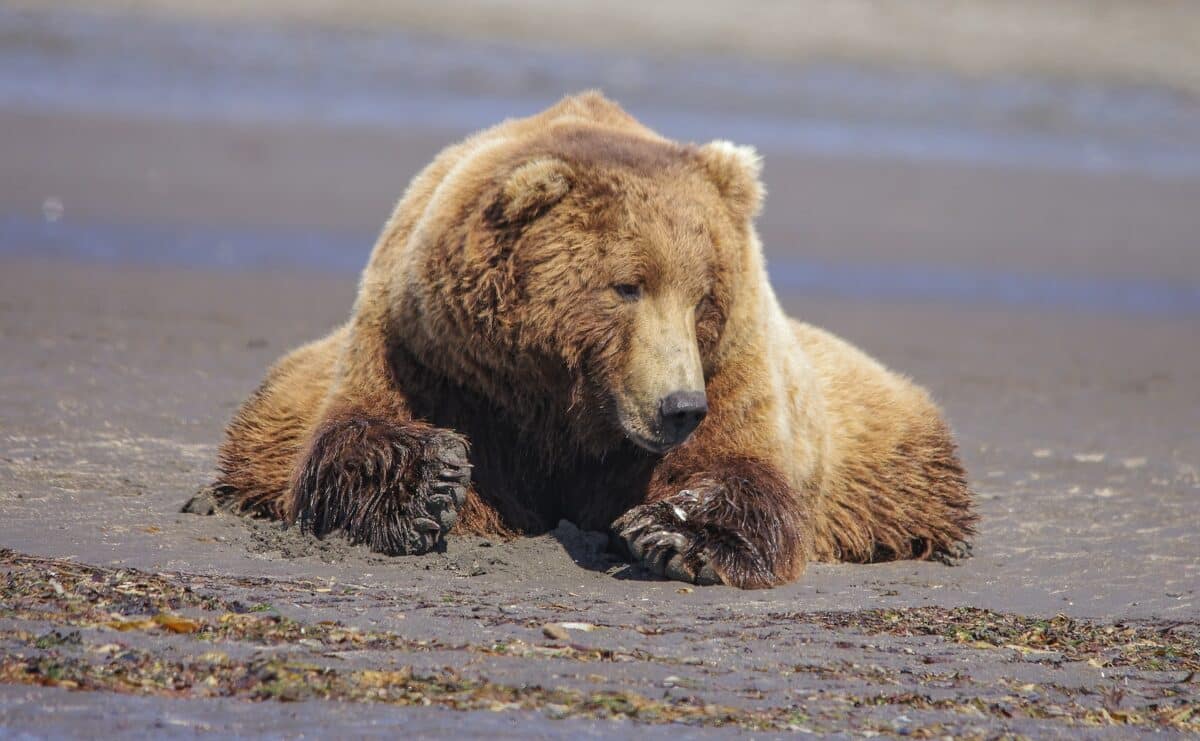
From the evidence, we can conclude that although bears and dogs share some distant ancestry, they have significantly diverged over time.
In fact, of all the animal groups, dogs and bears are among those that are most different from one another in terms of modern-day behavior and phenotype.
While we may not know all the answers about the evolutionary link between these two species, it’s clear that their relationship is a fascinating story. With continous breakthroughs within DNA-research and the finding of new fossils, we’ll keep getting more answers about their shared lineage and more specific knowledge about how closely related dogs and bears are.
Thank you for reading this article! If you’re keen for more fascinating fats about bears, head over to read our post about the Brown Bear vs. Grizzly Bear.
- Magpie Bird Is Reunited with Her Dog Best Friend - April 24, 2024
- Dog Saves Another Dog From Drowning in Fish Pond - April 23, 2024
- Man On Motorbike Rescues Cat From Highway - April 23, 2024

